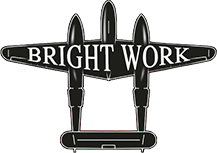When the winter’s over and a new season begins, it's time to think about ways…
Metal Polishing Advice for Aircraft Owners
If you own an aircraft of any kind, you’re probably familiar with the challenges of regular maintenance and upkeep. It’s important that these are done with the utmost care and on a consistent basis. In some cases, maintenance may be required to continue certain licensing or regulatory requirements.
While polishing your aircraft may not be as technical as calibrating your electronics or ensuring that your landing gear is fully serviced, it’s an important aspect of upkeep. Shining bright work can serve the purpose of great advertising for your commercial aircraft or simply help to give you the unique peace of mind and satisfaction from a job well done.
Novices and veteran aircraft owners alike can always use a tip or two when it comes to polishing advice. Consider it done in this next post all about the best polishing advice for aircraft owners.
Keeping Things Clean
In order to ensure the most efficient flight patterns possible, you must keep your aircraft clean and free of debris. The build up can affect flight speed and performance. This includes bug and pest stain, sap, and oil that can collect around the wings or throughout the lower exterior of the aircraft.
For cleaning, it’s best to avoid the most corrosive cleaning products. These include most of the cleaners meant for household use. These may be great for kitchen counters and bathroom floors but can be detrimental to aluminum surfaces and damage sealants on aircraft, so definitely use caution when selecting them.
The cleaning period is also prime time for inspecting your aircraft. A full inspection accompanying each cleaning could prevent subsequent maintenance issues or enable owners to catch developing issues before they get out of hand.
Pick Your Tools Wisely
Choosing the tools you’ll use to polish and perfect your aircraft is an important step in the polishing process. The type of polisher or buffer used can mean the difference between a lengthy and burdensome ordeal and a solid efficient polishing job that everyone can appreciate.
Orbital polishers are favorites among technicians and private aircraft owners. Those with dual heads and a nice low balance allow for better control during the polishing process. Most come with variable speeds allowing users to choose the setting that best ensures no swirl marks or heat build up.
However, the exceptional performance and durability of a random orbit polisher is also worthy of consideration. These polishers produce excellent results even in the hands of a novice. The main feature to look for in a polish is a swirl-free polishing action that won’t’ damage the aircraft during the polishing process.
Consider Adequate Supplies
Most polishers don’t come equipped with the buffing pads you’ll need to get an extensive polishing job completed. Still, it’s important to have pads and other supplies on hand in order to get a good start.
Polishing pads come in a variety of different materials. There are wool varieties as well as natural cotton fibered pads. Synthetic pads are also available. To choose the best pads, consider the type of job you’ll be doing. For rough polishing jobs involving planes with considerable amounts of oxidation, watermarks, cloudiness and more, a sturdier, wool pad may be best.
The most important supply needed is the aircraft metal polish. Top of the line polish varieties can produce a mirror-like finish that’s easy to maintain and can stand up to the normal wear and tear any aircraft may experience.
For best results, find an aircraft polish that gradually prepares the surface for the final brightwork shine in a series of steps. For instance, some polishes come in a system series with the first polish for cleaning and removing light oxidation, the next polish tackling heavier oxidation and damage and the final polish used to reveal a brilliant shine.
A Note on Aviation Approved Polishes
Some aircraft metal polishes are developed after years of testing and still fewer metal polishes are aviation-approved. This means that the polish has been tested on a number of commercial and private aircraft. It also means that the product has met certain product certification guidelines regulated and outlined by the Federal Aviation Administration.
Get the Technique, With Patience
Every aircraft owner has their own personal technique for polishing, but patience is the most universal asset to have when facing any polishing job. To maximize efficiency, it’s a good idea keep several towels and extra supplies within reach for added convenience.
For the veterans who have mastered a solid technique, that expertise may have its roots in a trial and error process. Getting a good feel for the best way to move through a polishing job with the least amount of workload and wear and tear on joints and muscles takes time and experience. Depending on your personal preference it may be a good idea to begin working through a small square footage area with or without wiping away excess polishing before moving on to the next area.
You’ll also need to get to know the tools you’re working with over time. For instance, knowing that the grip on your orbital polisher gets you the most control at the high speeds could make a huge difference at the end of a marathon job.
The Best Aircraft Owner Polishing Advice
The best polishing advice for aircraft owners is to find an aircraft polish that’s versatile and gives the results you desire without the hassles and inefficiency of poorer quality polishes. With the right polish, you work could result in the mirror finish the professionals produce with half the cost. For the best results, choose an aviation-approved polish form the most reputable dealer you can find.

This Post Has 0 Comments